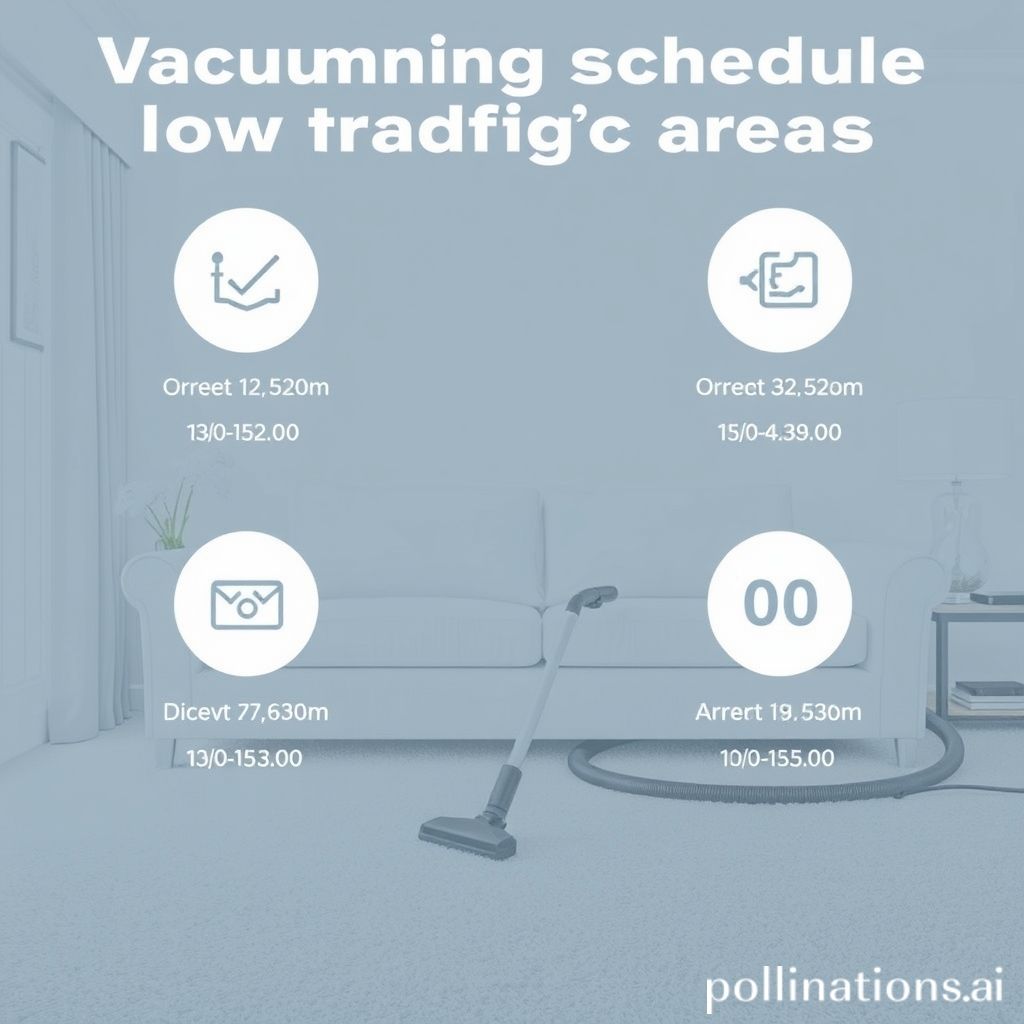Do you ever find yourself constantly battling with dirty carpets? Wondering how to maintain cleanliness and freshness in your home? Well, you’re in luck because we have some answers for you. In this blog post, we will unveil the secrets to keeping your carpets spotless and dirt-free. From the frequency of vacuuming to effective techniques for high-traffic and low-traffic areas, we’ve got you covered.
So, get ready to delve into the world of carpet maintenance and discover how to achieve that pristine look you’ve always desired.
Factors Affecting the Frequency of Vacuuming
A. Carpet Type and Material
Different types and materials of carpets require different frequencies of vacuuming. High-pile carpets tend to accumulate more dust and debris compared to low-pile carpets. Materials like wool or shag carpets can trap dirt deep within their fibers, necessitating more frequent vacuuming for cleanliness.
B. Level of Foot Traffic
The amount of foot traffic on your carpets plays a significant role in determining how often you should vacuum. High-traffic areas like entryways, hallways, or living rooms may require more frequent vacuuming than less frequently used spaces like bedrooms or guest rooms. Regular vacuuming helps remove dirt, dust, and allergens brought in from outside, preventing them from settling deep into the carpet fibers.
C. Presence of Pets or Allergies
If you have pets or family members with allergies, more frequent vacuuming is crucial. Pets shed fur and dander, which can accumulate in carpets and trigger allergies or asthma symptoms. Vacuuming at least once or twice a week can help remove pet hair, dander, and other allergens, ensuring a cleaner and healthier environment for both humans and pets.
D. Environmental Factors
Environmental factors such as indoor air quality, humidity levels, and surrounding pollution can influence the frequency of vacuuming. In areas with high pollution or poor indoor air quality, more frequent vacuuming can help remove pollutants and improve overall cleanliness. High humidity levels can also contribute to the growth of mold or mildew, requiring regular vacuuming to prevent their development.
Considering these factors and implementing a regular vacuuming schedule can help maintain cleanliness, prolong the lifespan of your carpets, and create a healthier living environment.
Expert Tip: Regular vacuuming based on carpet type, foot traffic, pets/allergies, and environmental factors ensures a clean and healthy living space.
Vacuuming Schedule for High-Traffic Areas
A. Importance of Frequent Vacuuming in Busy Areas
Regular vacuuming is crucial in high-traffic areas to maintain cleanliness and prolong the lifespan of your carpets. These areas, such as hallways, living rooms, and entryways, tend to accumulate more dirt, dust, and debris due to constant foot traffic. By vacuuming frequently, you can effectively remove these particles and prevent them from settling deep into the carpet fibers.
B. Tips for Effective Vacuuming in High-Traffic Areas
- Choosing the Right Vacuum Cleaner for Heavy Use: When selecting a vacuum cleaner for high-traffic areas, opt for models that are specifically designed for heavy use. Look for features like powerful suction, durable construction, and efficient filtration systems to effectively remove dirt and allergens from your carpets.
- Proper Technique for Thorough Cleaning: To maximize the effectiveness of your vacuuming, use the following technique:
- Start by removing any larger debris or objects from the carpet surface manually.
- Adjust the vacuum cleaner to the appropriate height setting for your carpet type.
- Vacuum in overlapping strokes, both horizontally and vertically, to ensure comprehensive coverage.
- Pay extra attention to high-traffic areas and concentrate on areas where dirt and debris tend to accumulate, such as near entrances and under furniture.
- Regularly empty the vacuum cleaner’s dust bag or canister to maintain optimal suction power.
- Addressing Specific Stains or Spills in Busy Areas: In high-traffic areas, spills and stains are more likely to occur. Promptly address these incidents using the following steps:
- Blot the spill with a clean cloth or paper towel to absorb as much liquid as possible.
- Gently clean the affected area using a mild carpet cleaner or a mixture of water and vinegar.
- Avoid rubbing or scrubbing vigorously, as it may damage the carpet fibers.
- Rinse the area with clean water and blot dry.
- If the stain persists, consider seeking professional carpet cleaning services.
| Benefits of Frequent Vacuuming in High-Traffic Areas | Tips for Effective Vacuuming | Addressing Stains or Spills |
|---|---|---|
| Prevents dirt and debris from settling deep into the carpet fibers | Choose a vacuum cleaner designed for heavy use | Blot spills immediately to prevent staining |
| Prolongs the lifespan of carpets | Use proper vacuuming technique | Clean affected area with mild carpet cleaner |
| Improves indoor air quality by removing allergens | Pay extra attention to high-traffic areas | Rinse with clean water and blot dry |
Vacuuming Schedule for Low-Traffic Areas
Frequency Considerations for Less Frequently Used Areas
Maintaining cleanliness in areas with low traffic requires a different approach than high-traffic areas. Here are some things to consider:
- Assess the usage: Evaluate how often the area is used.
- Consider dirt accumulation: Take into account the amount of dust and dirt that collects in low-traffic areas.
- Pets and allergies: If you have pets or family members with allergies, you may need to vacuum more often.
Tips for Maintaining Cleanliness in Low-Traffic Areas
To keep low-traffic areas clean, follow these tips:
- Vacuum under furniture and in corners: Use the crevice tool or attachment on your vacuum cleaner to clean hard-to-reach places.
- Use attachments for hard-to-reach spots: Attachments like the upholstery tool or brush are perfect for cleaning delicate surfaces in low-traffic areas.
- Regular deep cleaning for best results: Include low-traffic areas in your regular deep cleaning routine.
For a complete vacuuming schedule, refer to the other sections of this article. Adapting your cleaning routine based on usage and dirt accumulation in low-traffic areas is crucial for maintaining cleanliness in your home.

How Often Should I Vacuum My Carpets to Maintain Cleanliness?
To maintain cleanliness and ensure a healthy indoor environment, regular vacuuming of carpets is essential. However, the frequency of vacuuming may vary depending on several factors. In this section, we will explore some indicators that suggest the need for more frequent vacuuming.
A. Allergies or Respiratory Issues Worsen
If you or anyone in your household suffers from allergies or respiratory issues, it is crucial to vacuum your carpets more frequently. Carpets can harbor allergens such as dust mites, pollen, and pet dander, which can trigger allergic reactions or worsen respiratory symptoms. Vacuuming at least twice a week can help reduce the presence of these allergens, improving indoor air quality.
B. Visible Dirt or Debris on Carpets
When you notice visible dirt, dust, or debris on your carpets, it is a clear sign that vacuuming is overdue. Regular foot traffic, outdoor pollutants, and everyday household activities can lead to the accumulation of dirt and particles in the carpet fibers. Vacuuming once or twice a week, or more frequently in high-traffic areas, can effectively remove these visible contaminants, keeping your carpets clean and fresh.
C. Accumulation of Pet Hair or Dander
If you have pets in your home, their fur and dander can accumulate in carpets over time. This not only affects the cleanliness but also contributes to allergens and unpleasant odors. Vacuuming two to three times a week, using a vacuum cleaner equipped with a pet hair attachment or brush, can effectively remove pet hair and dander, minimizing their impact on indoor air quality.
Regular vacuuming not only helps maintain cleanliness but also extends the lifespan of your carpets. By removing dirt, allergens, and pet hair, you can keep your carpets looking fresh and prevent them from becoming a breeding ground for bacteria and pests.
| Indicators of the Need for More Frequent Vacuuming |
|---|
| Allergies or respiratory issues worsen |
| Visible dirt or debris on carpets |
| Accumulation of pet hair or dander |
Additional Tips for Effective Carpet Maintenance
Beyond Vacuuming: Other Regular Maintenance Tasks
- Spot Cleaning: Promptly address spills and stains using appropriate cleaning solutions and techniques to prevent permanent damage.
- Regular Deep Cleaning: Schedule deep cleaning sessions using carpet cleaning machines or hire professional services to remove embedded dirt and allergens.
- Rotating Furniture: Move heavy furniture occasionally to prevent carpet indentations and uneven wear.
- Using Doormats: Place doormats at entrances to minimize the amount of dirt and debris brought inside.
Recommendations for Professional Carpet Cleaning
While regular maintenance is essential, professional carpet cleaning is recommended to ensure a thorough and comprehensive clean. Consider the following:
- Frequency: Schedule professional cleaning at least once every 12-18 months, depending on foot traffic and usage.
- Research: Choose reputable carpet cleaning companies with experience, positive reviews, and certified technicians.
- Methods: Inquire about the cleaning methods used, such as hot water extraction or dry cleaning, to determine the most suitable option for your carpets.
- Additional Treatments: Discuss additional treatments like stain protection or deodorizing to enhance the longevity and freshness of your carpets.
Preventive Measures to Reduce Dirt and Stains
To maintain the cleanliness and prolong the life of your carpets, consider implementing the following preventive measures:
- Regular Maintenance: Vacuum carpets regularly, aiming for at least once a week, or more frequently in high-traffic areas.
- No-Shoes Policy: Encourage family members and guests to remove their shoes before entering the house to minimize the amount of dirt tracked onto the carpets.
- Protective Mats: Place mats or rugs in areas prone to spills or heavy traffic, such as near dining tables or entryways.
- Immediate Action: Attend to spills immediately to prevent them from seeping into the carpet fibers and causing stains.
To maintain clean and fresh carpets, a combination of regular maintenance, professional cleaning, and preventive measures is crucial. By following these tips, you can enjoy a cleaner and healthier carpeted environment for years to come.
Conclusion
Regular vacuuming is essential for maintaining clean carpets and prolonging their lifespan. The frequency of vacuuming should be based on factors such as carpet type, foot traffic, presence of pets or allergies, and environmental conditions. High-traffic areas require more frequent vacuuming, while low-traffic areas can be vacuumed less often. Signs that indicate the need for more frequent vacuuming include worsening allergies, visible dirt or debris, and the accumulation of pet hair or dander.
Alongside vacuuming, professional carpet cleaning and preventive measures can also contribute to keeping your carpets in excellent condition.
Faq about Vacuuming Carpets for Cleanliness
FAQ 1: How often should I vacuum if I have pets?
Regular vacuuming is crucial if you have pets. Vacuum high-traffic areas at least two to three times a week and less frequented areas once a week.
FAQ 2: Can vacuuming too often damage the carpet?
No, vacuuming your carpets too often will not damage them. Regular vacuuming helps maintain cleanliness and prolong the lifespan of your carpets. Use a vacuum cleaner with adjustable settings to prevent excessive wear on delicate carpet fibers.
FAQ 3: Is vacuuming enough to remove all allergens?
Vacuuming is effective in removing surface allergens, but it may not eliminate all allergens embedded deep within the carpet fibers. Consider using a vacuum cleaner with a HEPA filter or hiring professional carpet cleaning services for thorough allergen removal.
FAQ 4: Should I vacuum before or after deep cleaning?
It is recommended to vacuum your carpets before deep cleaning. Vacuuming beforehand removes loose dirt, dust, and debris, making the deep cleaning process more effective. This ensures that the deep cleaning solution can penetrate the carpet fibers efficiently for a thorough cleaning.
FAQ 5: What type of vacuum cleaner is best for carpets?
For carpets, an upright vacuum cleaner with a rotating brush or a canister vacuum cleaner with a powerhead attachment is ideal. These vacuum cleaners are designed to effectively remove dirt and debris from carpets. Choose a vacuum cleaner with adjustable height settings for proper carpet-to-vacuum contact.

